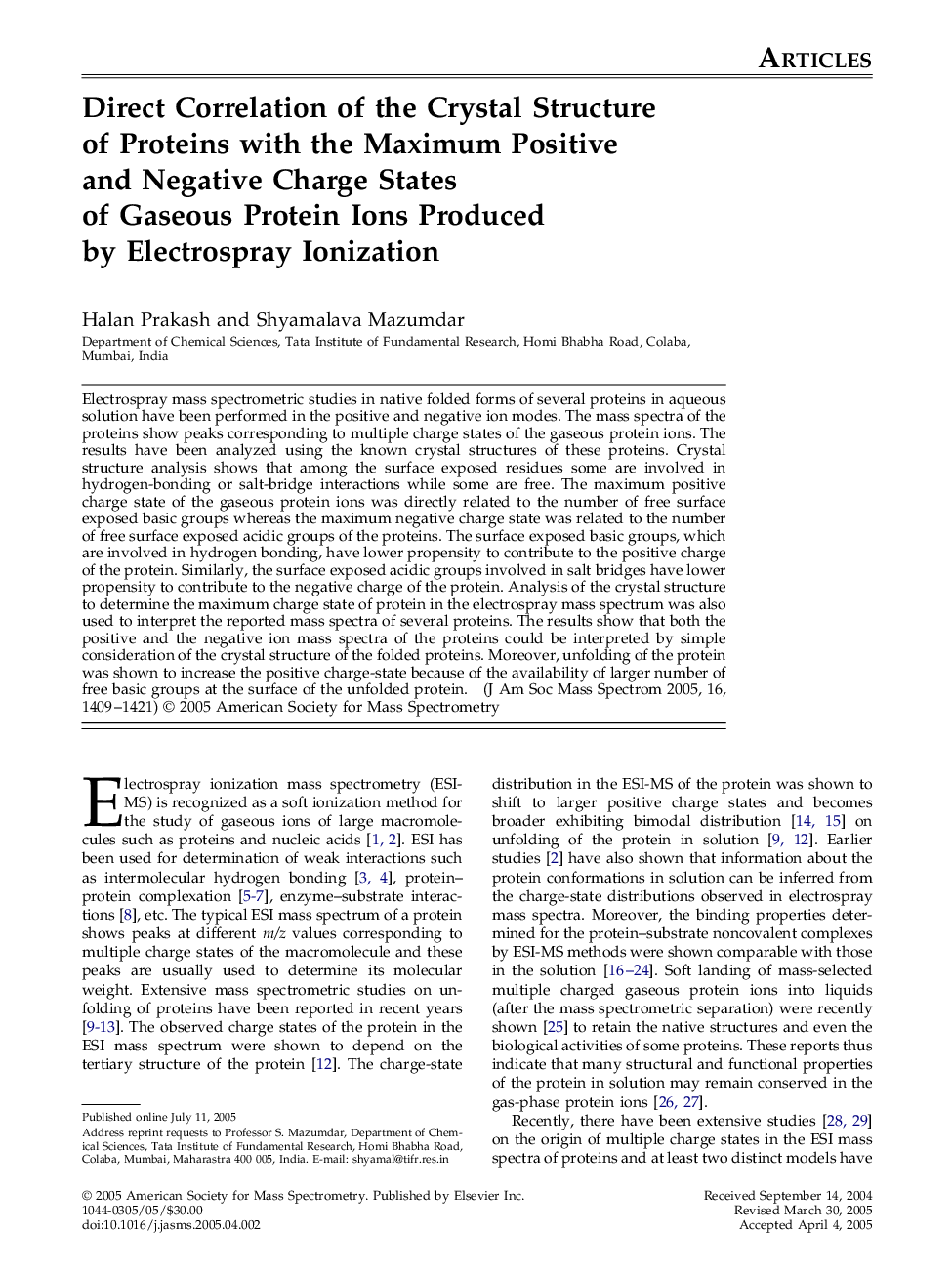| Article ID | Journal | Published Year | Pages | File Type |
|---|---|---|---|---|
| 10546979 | Journal of the American Society for Mass Spectrometry | 2005 | 13 Pages |
Abstract
Electrospray mass spectrometric studies in native folded forms of several proteins in aqueous solution have been performed in the positive and negative ion modes. The mass spectra of the proteins show peaks corresponding to multiple charge states of the gaseous protein ions. The results have been analyzed using the known crystal structures of these proteins. Crystal structure analysis shows that among the surface exposed residues some are involved in hydrogen-bonding or salt-bridge interactions while some are free. The maximum positive charge state of the gaseous protein ions was directly related to the number of free surface exposed basic groups whereas the maximum negative charge state was related to the number of free surface exposed acidic groups of the proteins. The surface exposed basic groups, which are involved in hydrogen bonding, have lower propensity to contribute to the positive charge of the protein. Similarly, the surface exposed acidic groups involved in salt bridges have lower propensity to contribute to the negative charge of the protein. Analysis of the crystal structure to determine the maximum charge state of protein in the electrospray mass spectrum was also used to interpret the reported mass spectra of several proteins. The results show that both the positive and the negative ion mass spectra of the proteins could be interpreted by simple consideration of the crystal structure of the folded proteins. Moreover, unfolding of the protein was shown to increase the positive charge-state because of the availability of larger number of free basic groups at the surface of the unfolded protein.
Related Topics
Physical Sciences and Engineering
Chemistry
Analytical Chemistry
Authors
Halan Prakash, Shyamalava Mazumdar,
